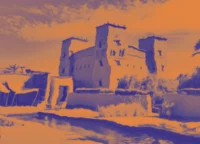Kasbah & Dar Hnini – Eden on the way to Erg Chigaga
Now the Moroccan south has its own luxury kasbah, a perfect location half way between Marrakech and Erg Chigaga dunes. But this is not just another kasbah turned guesthouse story. It’s personal. And it’s inspiring. Why personal: the owner of the house spent his childhood therein and returned decades after to restore it and […]
Kasbah & Dar Hnini – Eden on the way to Erg Chigaga Read More »

